The measurement of the power consumption is always a bit tricky, but as long as the measurements on the 12V feed (EPS) and the sensor values of the power supply of the motherboard plus voltage transformer losses are plausible, everything is fine. Because sometimes you have to look twice to believe the readings at the end. That's why we are once again relying on pure package power to avoid possible influences of the motherboard. The values of the PWM controller are really very reliable in the averaged value over a few minutes.
In Idle, the world is still perfectly fine. Both the standard version out-of-the-box and the overclocked processor are restrained. The fact that the Ryzen 5 2600X is so far ahead in the idle is something we do about our bad sample, but it's definitely not a general AMD problem, as the Ryzen 7 2700X shows. In general, however, all CPUs are quite economical. We wrote enough about the cooling in the previous section.
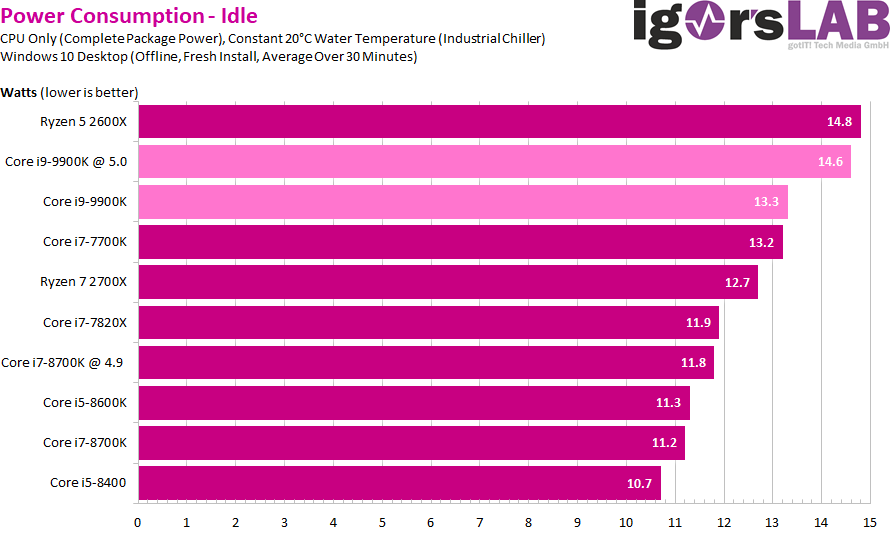
In the CAD workflow, both variants are still well in the race, with the power consumption only slightly higher than the Core i7-8700K. Up to this point, the very high voltage of well over 1.4V, which we have determined for stable operation (see also in the section on temperatures), is not disturbingly noticeable. Everything is still in the green area.
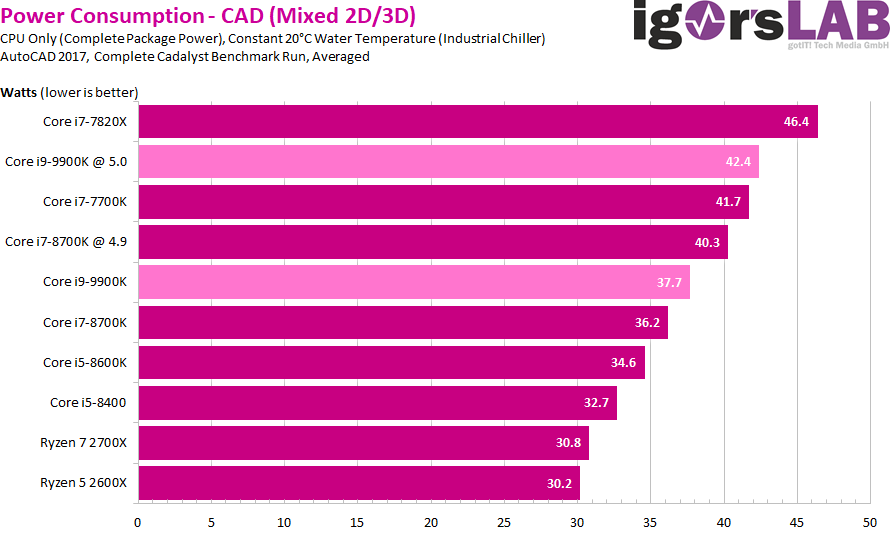
In the gaming loop, the power consumption is also still within the expected values, especially since not all cores can be used sensibly. A counter-test with Assassin's Creed Origins yielded much higher values (up to 20 watts more), but this game is so poorly optimized that completely different values could be measured each time.
Five measurements with five very different results is not something that would be suitable for a really fair comparison. However, the Core i9-9900K at 5 GHz never really exceeded the 100 watt limit, so that one could also make the rounds somewhat cool. At least in such games.
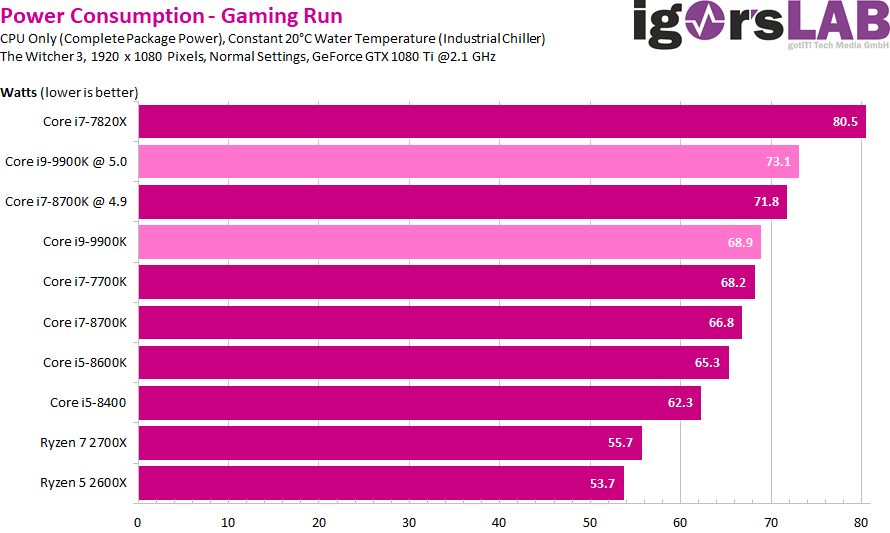
However, it becomes critical in productive use, because a constant load on all cores at the same time at such high clock rates is almost too much. And to clarify one thing, the Core i9-9900K not only glows with extensive use of AVX and Prime95 with just under 205 watts (250 watts OC), but it exceeds the specified TDP even without overclocking in completely normal applications!
In the Cinebench we measure 137 watts (232 watts OC), for a larger Blender workload even 145 watts (241 watt OC) and for calculations with various CAD plugins (Creo, Solidworks) still over 120 watts (198 watt OC). Without overclocking and at 4.7 GHz on all cores, the limits of a normal AiO compact water cooling are in sight, with the OC these are elegantly blown up. Such power consumption values on such a small base are somewhat meaningless.
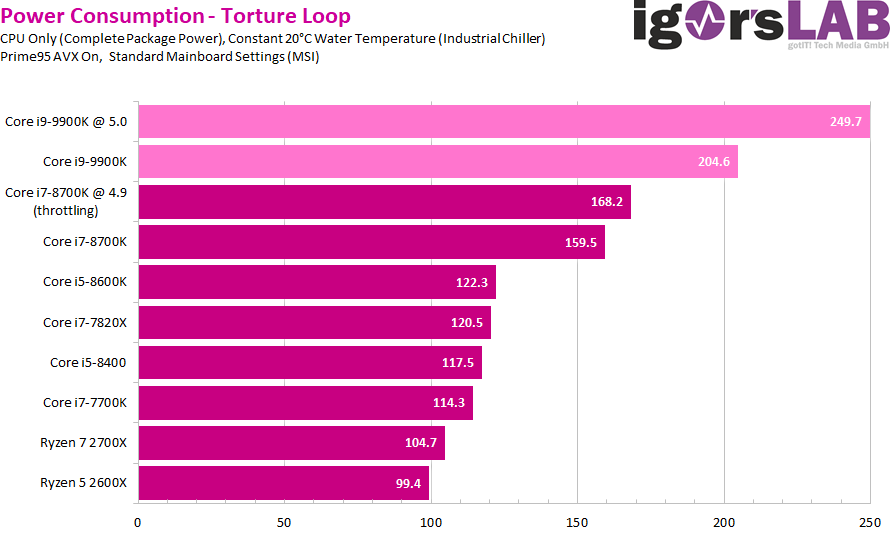
And to come back to the high voltage we created: it was definitely necessary in order to be able to make the rounds in the complex simulation calculations really flawlessly. If rendering plugins crash or complex scientific calculations fail on checksums, then the operation is unstable for us, whether all games start visibly without errors or not.
Stability tests with Prime95, Cinebench or even any games are pure self-deception and worth nothing. The same applies to the 3DMark, as the cycles are all far too short. Only when a system can really perform all tests without errors over hours in changing workloads should overclocking be considered really successful and stable. But no one does this in practice because it is far too time-consuming.
For this reason alone, I lack the belief in all the 5.x-GHz sensational messages with voltage specifications of less than 1.4x volts, in which something was as grandiose as possible in the short term. If it is demonstrably not possible to cool all this under full load also sensibly and to operate with voltages that are harmless for everyday operation and for the hardware, then such figures are simply worth nothing. I can lie to myself in my pocket.
Finally, and because it is always beautiful (colorful), the curves of the respective long-term measurements of the Intel Core i9-9900K in the standard state with the averaged values without the overclocking:
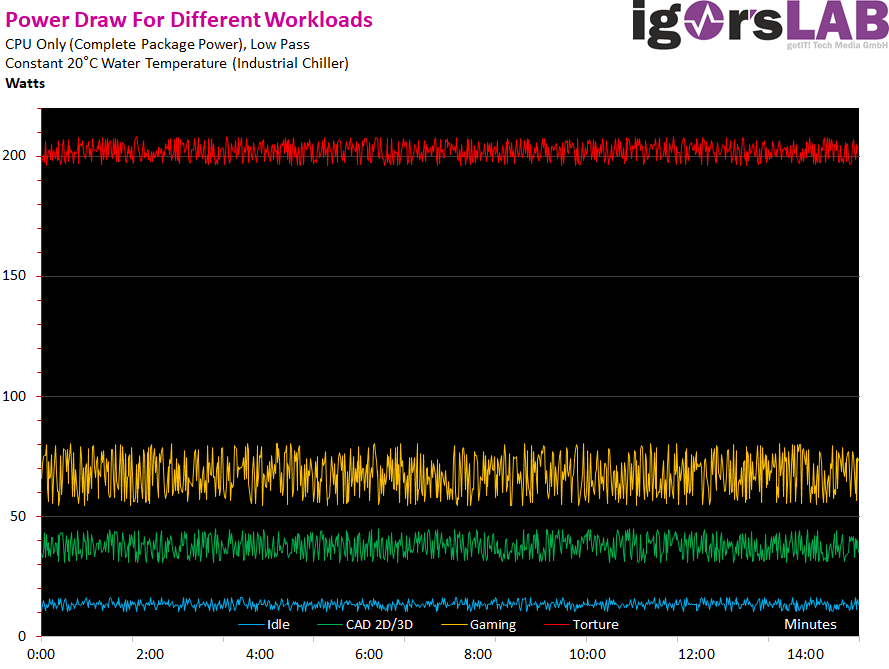
- 1 - Einführung und Architektur
- 2 - Security Patches, Testsystem
- 3 - Synthetische Tests
- 4 - AotS: Escalation, Civilization, DoW III
- 5 - Far Cry 5, GTA V, Hitman
- 6 - Shadow of War, Project Cars 2
- 7 - Office- und Browser-Benchmarks
- 8 - Adobe Creative Cloud
- 9 - Encoding und Kompression
- 10 - Workstation 2D/3D Grafik
- 11 - Workstation Compute/Rendering
- 12 - Temperaturen und Kühlung
- 13 - Leistungsaufnahme
- 14 - Zusammenfassung

































Kommentieren